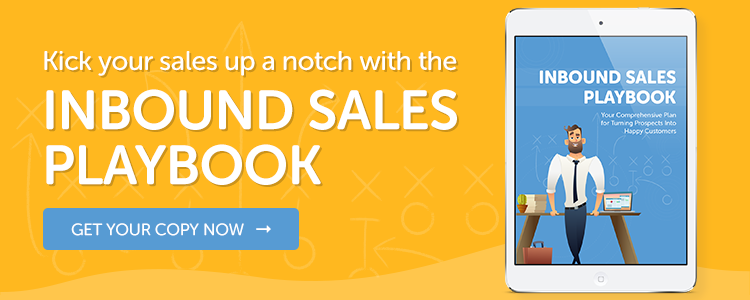Mastering the art and science of the sales demo is one of the most important things you can do to make your sales team more successful.
A good sales demo helps ensure that all your hard work pays off and launches your team’s results into the stratosphere.
In almost all sales processes, the sales demo is the last step before an agreement is inked. It follows the discovery call and, often, other discussions about the client enterprise and its needs. So, it is the biggest opportunity to show you’ve been listening!
It’s absolutely crucial to deliver kick ass sales demos in today’s B2B market, where competitors run away with even your best features in a matter of months. Clients need to know that your enterprise offers the capabilities, pricing, support, and cultural fit to their needs that they want.
Ideally, everyone on the team should understand the demo process inside and out – and be ready to deliver a killer demo on all your core products.
Of course, not everyone will find that they’re a sales demo natural. Some people consider presentations challenging, for example, while others might take a little extra work to wrap their minds around the ins and outs of your solutions.
The best way to bring everyone up to speed – and ensure new teammates contribute quickly in the future – is to have a step by step process for doing your best work with every sales demo.
Naturally, you’ll have to refine your approach with hard-won lessons out in the field.
Still, you can get off to a roaring start with these tips:
1. Start With an Effective Discovery Process
Your product probably has dozens, if not hundreds, of major features – and even the people who’ll be using it every day don’t care about all of them. Inevitably, some features get used daily and others fall by the wayside. A sales demo that covers everything is sure to be a snooze-fest.
Discovery helps you zero in on the factors that will be most important to your audience.
Not only can inbound sales pros learn a lot about discovery from their marketing brethren, but the marketing team can actually help you do it. Before you start planning your demo, it’s time to consolidate and review key data from every client touch point so far.
That gives you the ammo to be fluent in your prospect’s concerns before you even jump on your discovery call. You’ll be able to ask smart questions, guide the discussion, and pull it all together.
2. Build and Plan Your Demo in Advance
Once you know where to focus, there’s plenty of prep work you can do to make your demo a real eye-opener. When you keep the experience flowing freely, it seems that much more slick and professional.
Get your screen-sharing software ready, load up any links you might need in your browser, and prepare content you might want to reference – such as a case study or infographic. Never assume clients have “done their homework,” even if they had access to a piece of content.
Once you’re set up, it’s vital to run through every part of the demo the day before: Don’t get so focused on the content that you forget to review the software you’ll be using and get familiar with how it works. That includes your videoconferencing software!
After all, how tech savvy YOU are will be taken as a reflection of how well your solution works.
3. Say What You’re About to Say, Then Say It
The human attention span isn’t just short on the Internet, but virtually everywhere. Even if you have your prospect’s full attention, you probably don’t have it for very long.
With that in mind, start your sales demo by setting a simple agenda that the prospect can follow along with. Just like the word count or “time to read” figure displayed on a blog post, this lets them know what kind of commitment they’re in for at the very beginning.
You can also use this time to summarize the high points of past conversations and lay out your grasp of the prospect’s situation. If anything has been miscommunicated, it’s best to find out right away: You may have to adjust on the fly, but it’s better than giving an unhelpful demo.
Ask quick check-in questions to ensure your info is accurate before you launch into the real meat of the discussion.
Last, but not least, remember to say a few words about your company. When your demo is a winner, it means your new customer enters into a relationship with every part of your enterprise – not just you and your team. You can start to kindle trust in your organization right now.
4. Sprinkle in Tie-Down Questions
Tie-down questions are questions that help you get your prospect on board by giving them a chance to consolidate and reflect back how your product could serve their needs. In effect, they’re doing part of the sales job for you by mentally reviewing your points.
Tie-down questions can be incredibly simple.
Just combine something important to the prospect with a two-word finisher like:
- “Can’t you?”
- “Isn’t it?”
- “Shouldn’t they?”
For example, you might ask:
- “Saving money is important to you, isn’t it?”
- “If a tool could double your business, you’d use it, wouldn’t you?”
- “That feature could be useful, couldn’t it?”
Getting these small nods throughout your presentation will build greater rapport and prime you for an agreement later. Plus, you won’t have to work your way up to a big close, because you’ll have laid the groundwork for the final deal during the conversation.
This alleviates pressure on both sides – a worthy goal for any inbound sales expert.
Mapping out your demo in advance helps you make sure these questions are on-target and get sprinkled throughout the discussion. If you go in blind, it’s much easier to over-season your demo with this tactic ... and that can make you sound stilted.
5. Focus and Prioritize
Hopefully, none of the answers your prospect gave you while you summarized threw you off your rhythm. You should have a pretty strong idea of what your prospect’s priorities are – now, you want to reflect them by putting the most valuable features and insights first.
When you start with what your audience wants most, it gives you a major advantage in holding their attention. You might find that after covering the key points that matter to them, you don’t even have to go through all the ancillary perks your solution also has.
Ideally, your presentation should be modular so you can move from one bite-sized chunk to the next based on the feedback – both obvious and subtle – you get throughout your time together.
It’s much easier to master five minutes of laser-focused material than it is to try to internalize an hour’s worth. This is especially true when you’re dealing with a dynamic situation like software: When features don’t work as expected, it can torpedo your memory of a rehearsed speech.
Working in smaller pieces, you can adapt to the changing situation much more nimbly.
If you’re having trouble at any point, remember this as your North Star:
- “What unique value does this product provide to this specific customer?”
6. Address Questions at Every Phase

You probably already know what the most common questions, concerns – and, yes, objections – are when it comes to your product. Usually, the best way to address these is with a “question and answer” session at the end of your sales demo.
It’s interactive and has the benefit of helping you end on a high note (if your answers are solid!)
Of course, prospects can come up with questions at any step, and they’re going to want them answered. If you know you’re going to cover a particular question later on, address it briefly and let them know that a complete answer is coming.
What if they hit you with something new?
If you have at least one partner in your sales demo, holding new questions until the end can help you provide a polished and complete response – the person who isn’t speaking can work on it.
7. Set Expectations for Next Steps (Say What You Said)
When all is finally said and done, the ball will be in the prospects’ court.
You want to leave them with the most vital information fresh in their minds: A brief summary of the key points they need to know – and a reminder of those they were most excited about, of course.
It’s often a good idea to highlight what resources the customer will need to successfully implement the solution, such as:
- Time Commitment and Timeframe
- Skills (Front-Line and Leadership)
- Willingness and Ability to Learn
- Budget
Then, the kicker: What they need to do to move things forward.
This is the big moment, and it’s essential that your prospects clearly understand what comes next. This complex, sophisticated sales process boils down to the same essentials as your website’s landing pages: People are much more likely to take action when the next step is crystal clear.
You’ll usually have a pretty good idea what’s coming next by the time a sales demo ends.
Whether or not it’s time to break out the champagne, remember to reflect on the experience and highlight the lessons learned for next time. Even the most routine presentation can include some curveballs that you can prepare for in the future.
Follow these seven steps and, before you know it, you’ll be the maestro of the big moment where all your company’s sales and marketing come together.


Rob Steffens
I am the Director of Marketing here at Bluleadz. I'm a huge baseball fan (Go Yankees!). I love spending time with friends and getting some exercise on the Racquetball court.